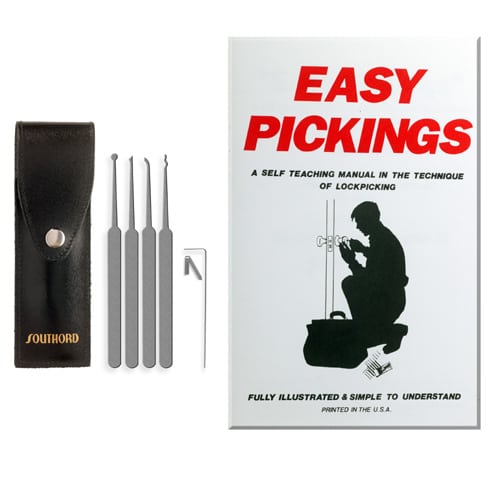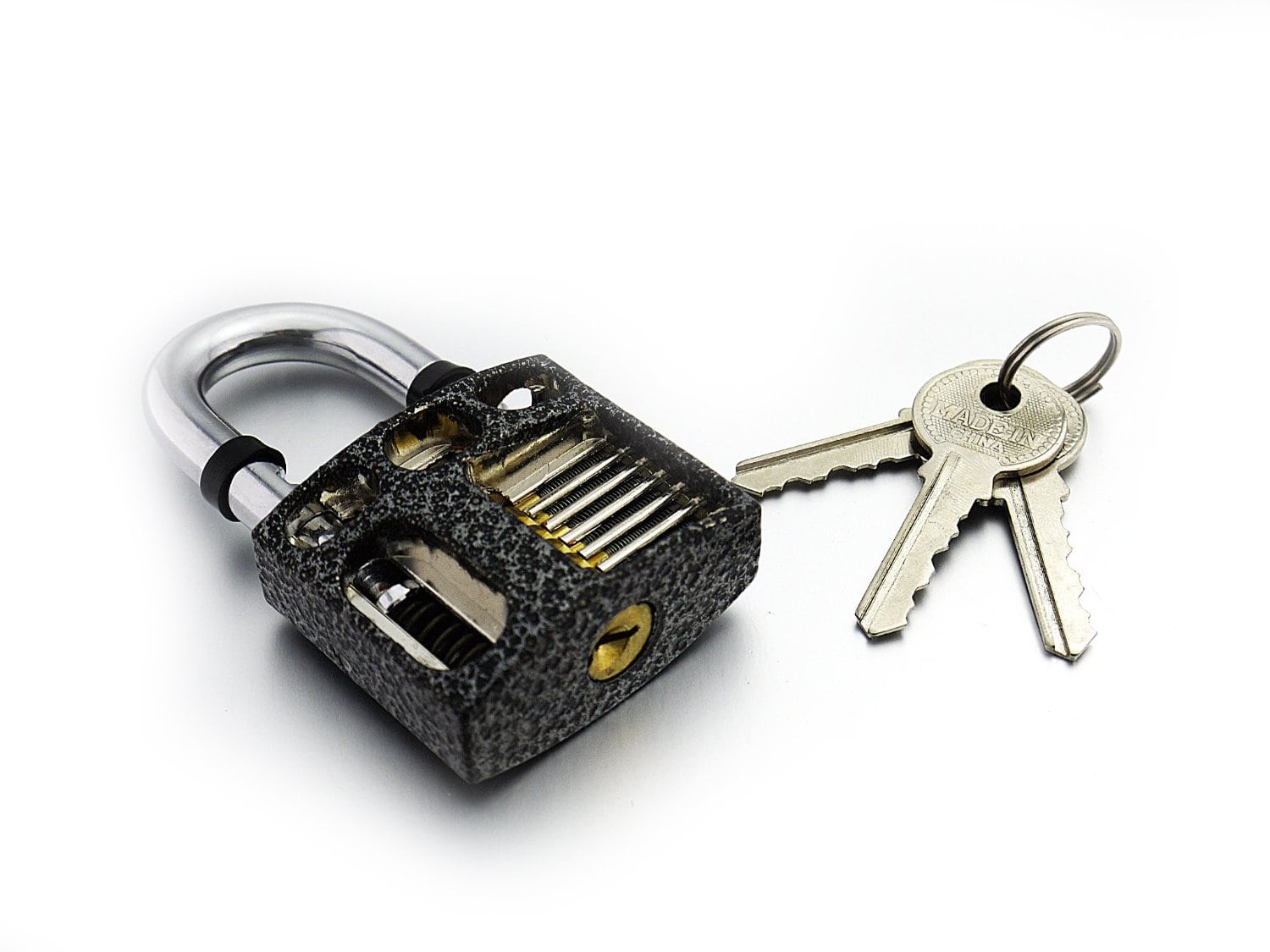What gear comes to mind when you think of a bug out bag? I would argue that the majority of us relate the term bug out bag to outdoor survival gear: shelter, water purification, fire making, bushcraft, etc. However, what about survival gear that can be applied strictly to an urban setting?
While there may be many urban-specific survival tools, one which comes quickly to mind is a small lock pick set. Whether you are trying to make passage through locked gates or scavenging for materials, a lock pick set might be your best friend. Crow bars and bolt cutters certainly have their place, but they are heavy and can be loud. In this article, I will show you how to get started with lock picking on the cheap (<$20)!!
My first venture in to lock picking was as a freshman in college. Frequently, my fellow students would lock themselves out of their dorms. The first two times you locked yourself out, the maintenance man would come and unlock it for free. However, every time after that, you would be charged a fee of $5. Luckily for me, I had some very forgetful friends. Charging only $3, I learned the skill of lock picking and unlocked their doors for them :)
How did I get started?
First, get yourself a nice small starter set.
Southord makes some very nice quality lock pick sets for as little as $16.50
Here the beginners kit I started with. It consists of 5 pieces + a beginners booklet. You may be tempted to go all out and buy the big kits, but they are not worth it at this point. You will most likely only be using 2-3 tools until you get the hang of it.

Also be sure to check out our Sponsors ReadyMan using the banner link below. They are offering a free (only shipping and handling) hostage escape card which has the tension wrench, picks and other tools. It’s a great every day carry kit you can have in your wallet!
[adinserter block=”2″]
Second: Understand the principles of what you are doing.
The animated video below shows the concept of lock picking fairly well. In addition, I’ve provided a short summary of what is going on below the video.
A lock is a cylinder that rotates inside of a hull. Between the cylinder and the hull, several pins consisting of an upper and lower portion are staggered and prevent the cylinder from turning. It is only until the pins are elevated at the right level that the break between the upper and lower portions of the pins aligns with the “shear” line and allows the cylinder to turn.

How do lock pickers overcome this design? The lock picker inserts a tool called a tensioner into the key hole. All it is, is a stiff metal piece with a 90 degree bend. Using the tool, the lock picker turns the cylinder forcefully against the hull causing the pins to be jammed in between.
As no two pins have “exactly” the same diameter, one pin (the thickest) will bind before the others. The lock picker’s job is to find the pin that binds the most and push it down until the gap between the upper and lower pin portions aligns with the shear line.
When that alignment happens, the upper and lower pin portions will separate and the cylinder will turn a micro fraction to bind the next pin. The lock picker will continue to find the next bound pin and push it into place until all pins have been successfully aligned. At that point, the entire cylinder will turn and unlock the lock.
As you can imagine, the more pins that are in the lock, the more difficult it becomes to pick. Some of the easiest ones I’ve picked are the Masterlock combination locks with the dial. Many of them have a small “master key” hole in the back which only has three pins. Think your locker is safe with one of these? Think again because it can be picked in a couple of seconds.
If you want to get a leg up in understand what is happening, Amazon has a really neat “transparent” lock that allows you to see what’s happening behind the scenes while you pick. It serves as a great practice device for only $14.00.
Remember though, you can sometimes get “too comfortable” with a particular lock’s pin configuration. Once you understand how to do it, make sure you venture into the unknown and try to unlock various locks around your house.
For more information on lock picking, How Stuff Works has a nice multi page article.
HAPPY PICKING!




